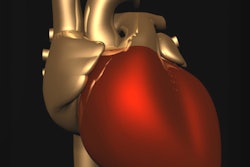Monday, November 26 | 3:00 p.m.-3:10 p.m. | SSE14-01 | Room E353C
Artificial intelligence (AI) algorithms could enable screening for the risk of osteoporosis-attributed bone fracture by analyzing CT scans that are already being performed for other purposes, according to researchers from Switzerland.Osteoporosis is a prevalent condition that is estimated to cause more than 9 million bone fractures worldwide each year. While early intervention can help prevent osteoporosis-attributed fractures in those at risk, systematic screening programs aren't common, according to first study author Dr. Thomas Re from University Hospital Basel.
Vertebral trabecular bone mineral density (CT-tBMD) has been proposed as a possible opportunistic screening approach for patients who receive a CT scan for other comorbidities, but this would require data on the distribution of CT-tBMD in the overall population and in those with an identified elevated risk of fractures, he said. To tackle this project, the researchers utilized two AI technologies developed at Siemens Healthineers for labeling and segmenting thoracic vertebrae. CT-tBMD is then determined from the segmented thoracic vertebrae, according to co-author Sasa Grbic, PhD, director of artificial intelligence at Siemens.
The researchers tested the viability of the machine-learning pipeline on a population of approximately 10,000 individuals involved in the COPDGene lung pathology study. To determine the likely relationship of fracture risk to CT-tBMD, the same pipeline could also be applied to imaging data from individuals with a known history of osteoporosis-attributed fractures.
"With the [advent] of industry-grade, machine learning-based networks for automatic bone segmentation from CT datasets, large databases of CT scans taken from public and private sources can be used to generate [CT-tBMD] distribution statistics," Re said. "Such statistics would be at the foundation of future opportunistic screening for osteoporosis bone fracture risk and lead to early intervention and prevention of such fractures and related morbidity in the overall population."





















